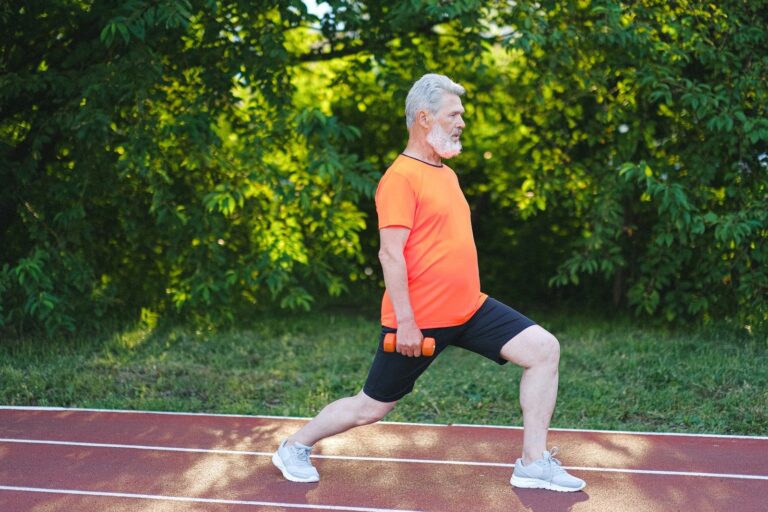Many people, while thinking about becoming in shape, concentrate on developing the visible muscles of their arms, chest, and abs. But, you run the risk of developing imbalances, weaknesses, and other issues if you ignore your lower body. When this happens, wall sits are used.
The muscles in your legs, glutes, and abs may all benefit from doing wall sit, an easy-to-perform exercise. The purpose of this article is to provide a more in-depth examination of the merits of wall sit and to provide guidance on how to include this activity in your current fitness regimen.
Table of Contents
How to Perform a Wall Sits
A wall sit may be done with minimal preparation and requires no tools beyond a wall. Follow these steps to complete the task:
- Place your back against a wall and your feet shoulder-width apart.
- The correct position is to slide down the wall until your thighs are parallel to the floor and your knees are over your ankles.
- Attempt to maintain this posture for at least 30 seconds.
- After resting for 30 seconds, slowly stand back up and continue the routine.
The Benefits of Wall Sits
Builds Leg Muscle and Glute Strength
Your quadriceps and glutes, two of your larger and sturdier muscle groups, get the bulk of the work in wall sit. Maintaining this position builds strength and stamina by making the muscles work against gravity.
Improves Your Posture
Strengthening the abdominal and back muscles with wall sit is another way in which posture is enhanced. Having a strong core and back makes it simpler to stand tall, which in turn reduces the risk of back discomfort and other problems connected to poor posture.
Increases Your Endurance
Holding a wall sit for a long time is an isometric workout that can help improve your endurance. Regular wall sits are an excellent way to increase your muscle endurance, which in turn may boost your performance in a wide variety of other physical endeavors.
Low-Impact Exercise
Being a low-impact activity, wall sit reduce the risk of damage to the knees, hips, and lower back. Because of this, they are highly recommended for persons dealing with hip or knee discomfort or who are in the healing process after an injury.
Tips for Getting the Most Out of Your Wall Sit
If you want to maximize the effectiveness of your wall seats, consider the following:
- Start slow: If you’re just getting into wall sits, take it easy at first by holding onto the wall for shorter periods of time.
- Focus on form: Your knees should be squarely over your ankles, and your back should be flat on the wall.
- Breathe: Do not forget to take breaths throughout your wall sits. Rather, take calm, deep breaths in through your nose and out through your mouth.
- Incorporate into your routine: As wall sits are a simple workout that can be done just about anywhere, try working them into your everyday regimen. Do a series of wall sit during the show’s commercials.

Variations of wall sits
Several varieties of the wall sit, such as the single-leg wall sits or the wall sits with weights, can increase the difficulty of the exercise and/or focus on certain muscle groups.
The single-leg wall sits
In this version, you’ll execute wall sit on one leg at a time, with your other leg bent at the knee and elevated off the ground. This is a great way to strengthen your legs and glutes, which may aid in your stability and balance.
The wall sits with weights
Weighted wall sit are a variant on the traditional wall sit in which the performer holds weights. Increased muscular strength and stamina may result from this, since the activity is made more challenging. If you’re just getting started with weight lifting, it’s best to use lesser weights at first and work your way up as your strength increases.
If you have any preexisting health concerns or are still healing from an accident, it is essential that you speak with a doctor before beginning an exercise regimen.
Safety Precautions and Warnings
- Consult with a healthcare professional: If you have any preexisting ailments or are nursing an injury, it is essential that you speak with a medical practitioner before beginning an exercise regimen.
- Start slowly: If you’re just getting started with wall sits, take it easy at first and work your way up to longer sessions with more intensity.
- Use proper form: Maintaining correct form when doing wall sits is crucial for avoiding injury. Maintain a seated position with your back against the wall, feet hip-width apart, and knees directly over your ankles.
- Avoid pain: If you do, stop right away and see a doctor.
- Listen to your body: Pay attention to your body and rest if you’re feeling exhausted or extremely tired during activity. Don’t overdo it and risk injury.
While beginning a new fitness routine, it is essential to take care and pay attention to your body. Talk to your doctor if you have any worries or queries.
Adding it to Your Existing Fitness Routine
Strength training for the legs and glutes is possible with it, which may be included into a wider fitness regimen. Incorporate it into your exercise program in the following ways:
- Start with a warm-up: To get your muscles ready for activity, you should spend 5-10 minutes warming up before you start your workout. Light aerobic workouts like walking, running, or jumping jacks would fit the bill.
- Incorporate other strength-training exercises: Use it with other strength-training exercises like squats, lunges, and deadlifts to work multiple muscle groups and boost overall strength and endurance.
- Include cardio exercises: Cardiovascular workouts, such as jogging, cycling, and jumping rope, can help you burn calories and enhance your heart health.
- Stretch after your workout: End your workout with some stretching exercises to assist increase your flexibility and decrease the likelihood of injury.
Complementary Exercises
Some additional leg strengthening and endurance workouts to supplement wall sits are as follows:
- Squats: Squats are a great way to strengthen your legs and glutes as well as your core.
- Lunges: Balance and stability may be enhanced by performing lunges, which work the leg, gluteal, and hip muscles.
- Deadlifts: Strength and stability may be increased by performing deadlifts, which work the legs, back, and glutes.
- Leg press: The leg press is an effective exercise for building leg muscle and gluteal strength.
Doing out in a repetitive manner can lead to muscle atrophy and boredom, so try switching up your program to strengthen new muscle groups. Using several types of exercise in your regimen will help you achieve your fitness and health goals more effectively.
Conclusion
Building lower-body strength and endurance, enhancing postural alignment, and expanding your fitness repertoire are all possible with a few basic wall sit. Stronger muscles, more stamina, and an overall healthier physique are all possible outcomes of include wall sits in your regular exercise program. Take it easy at first, pay attention to your technique, and pay attention to your body’s cues to get the most out of this straightforward workout. Feel the difference in your lower body strength and endurance when you incorporate wall sit into your regular practice. The benefits of wall sits are many, including a stronger and healthier physique.
FAQs
Q. Can I lose weight by doing wall sits?
Strength training, such as wall sits, can boost your muscle mass and, in turn, your metabolism and calorie expenditure. Yet, you shouldn’t count on them as your only strategy for losing weight.
Q. For how long should I hold a wall sit?
Wall sits should be performed twice or thrice per week, with rest days in between.
Q. Can knee discomfort be a result of doing wall sits?
Most individuals may safely perform wall sits since they are a low-impact workout. Keep your form correct and begin with shorter holds if you’re experiencing knee discomfort before working up to longer ones.
Q. What fitness level should avoid wall sits?
Adjusting the time spent in the hold or the distance from the wall makes wall sits suitable for people of varying fitness levels.



